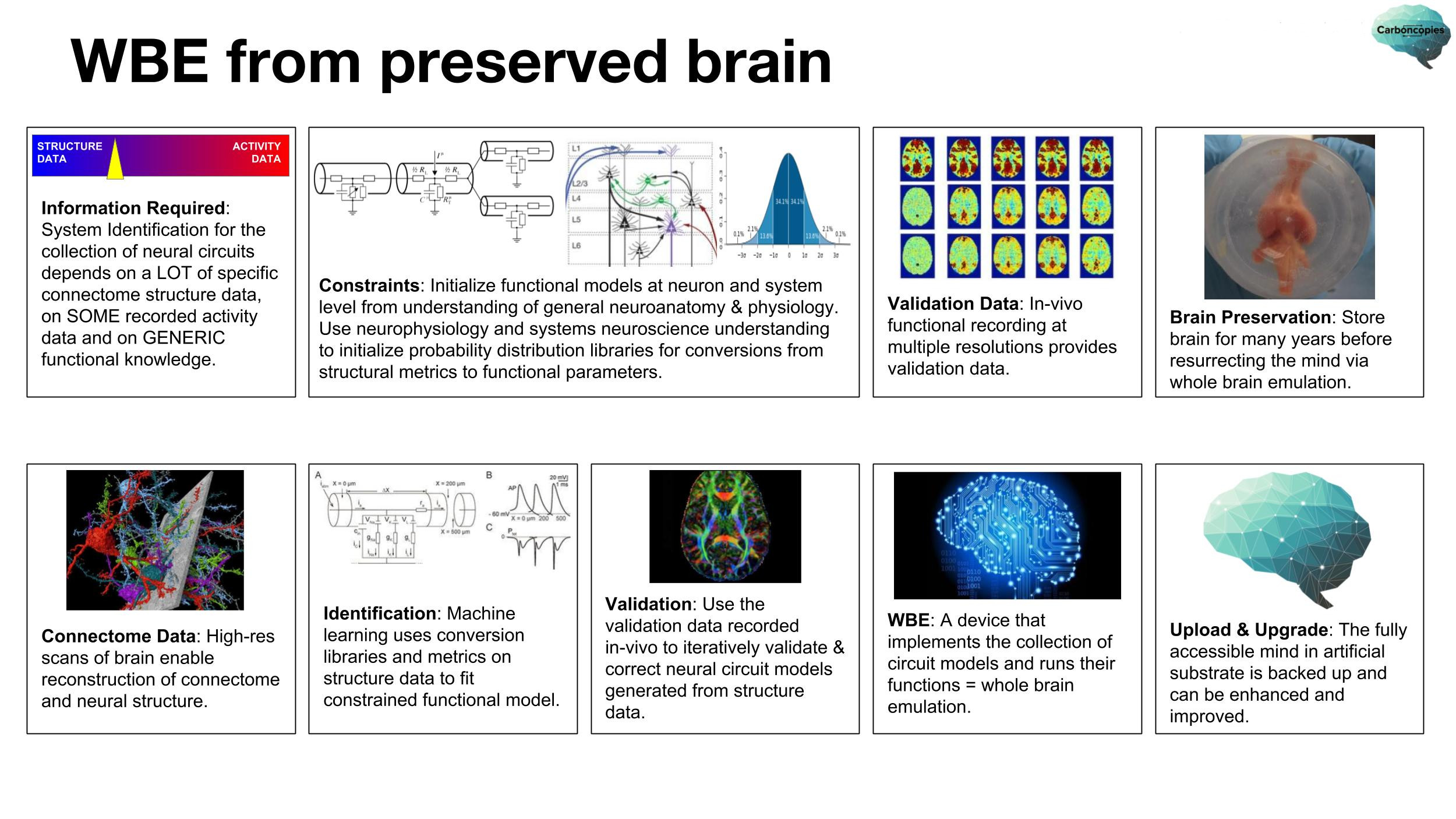Welcome
The Whole Brain Emulation (WBE) Roadmap update group is working on an update of a forward-looking roadmap towards whole brain emulation. The first WBE roadmap manuscript was published in 2008 by the Future of Humanity Institute, Oxford University, edited by Dr. Anders Sandberg and Prof. Nick Bostrom. It was a compilation of articles contributed in a follow-up report to the First Whole Brain Emulation Workshop at Oxford University, by workshop participants John Fiala, Robin Hanson, Kenneth Jeffrey Hayworth, Todd Huffman, Eugene Leitl, Bruce McCormick, Ralph Merkle, Toby Ord, Peter Passaro, Nick Shackel, Randal A. Koene, Robert A. Freitas Jr and Rebecca Roache. You can download the 2008 manuscript here: https://www.fhi.ox.ac.uk/brain-emulation-roadmap-report.pdf
Many technical developments and advances in understanding have come along in the years since the 2008 publication. The WBE Roadmap update group aims to publish a significantly revised, updated, and for some topics, extended roadmap. This update requires input from leading experts in numerous fields, insights gathered through a series of workshops, and the selective publication of individual sections in peer reviewed academic journals. During this process, the WBE Roadmap update group will make available on this site pre-print manuscripts of roadmap sections seeking public comment, as well as finalized and/or published sections.
Pre-prints seeking comment Published (sub)sections

What is whole brain emulation?
Whole Brain Emulation (WBE), is the putative process of creating a high-fidelity digital replica of a biological brain by scanning and simulating its structure at a sufficiently detailed level. The goal is to replicate the brain's functions — including consciousness, memories, and personality — in a computational substrate, effectively recreating a mind in a non-biological form.
Key Aspects of Whole Brain Emulation:
- Acquiring brain data: Advanced neuroimaging techniques (e.g., high-throughput electron microscopy) need to map the brain's neurons, synapses, and other structures. The goal is to capture the connectome (the brain's wiring diagram) and possibly molecular-level details.
- Emulating the dynamic brain: The scanned data must be used to construct a computational model that replicates the relevant operations achieved by the brain's biological processes.
- Substrate independence: If consciousness arises from a brain's computational structure, not its biological medium, then it can theoretically run on artificial hardware (e.g., supercomputers, neuromorphic chips).